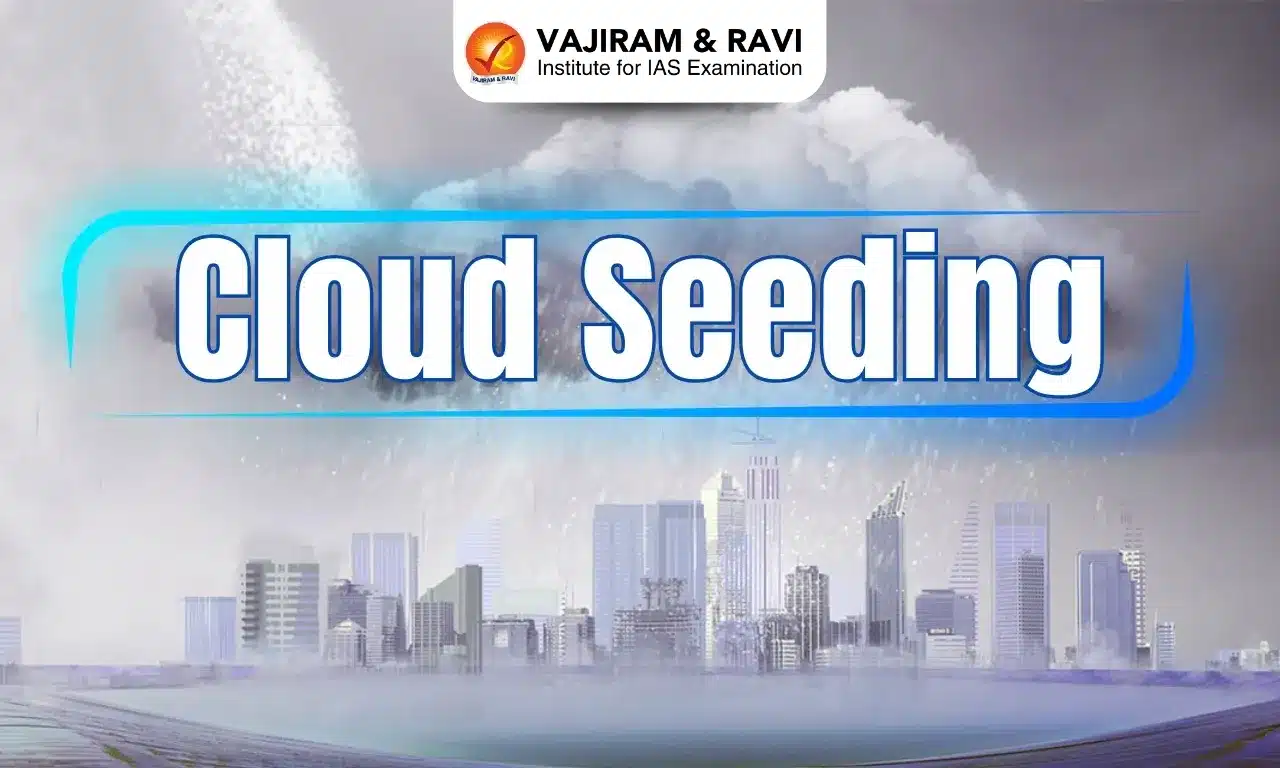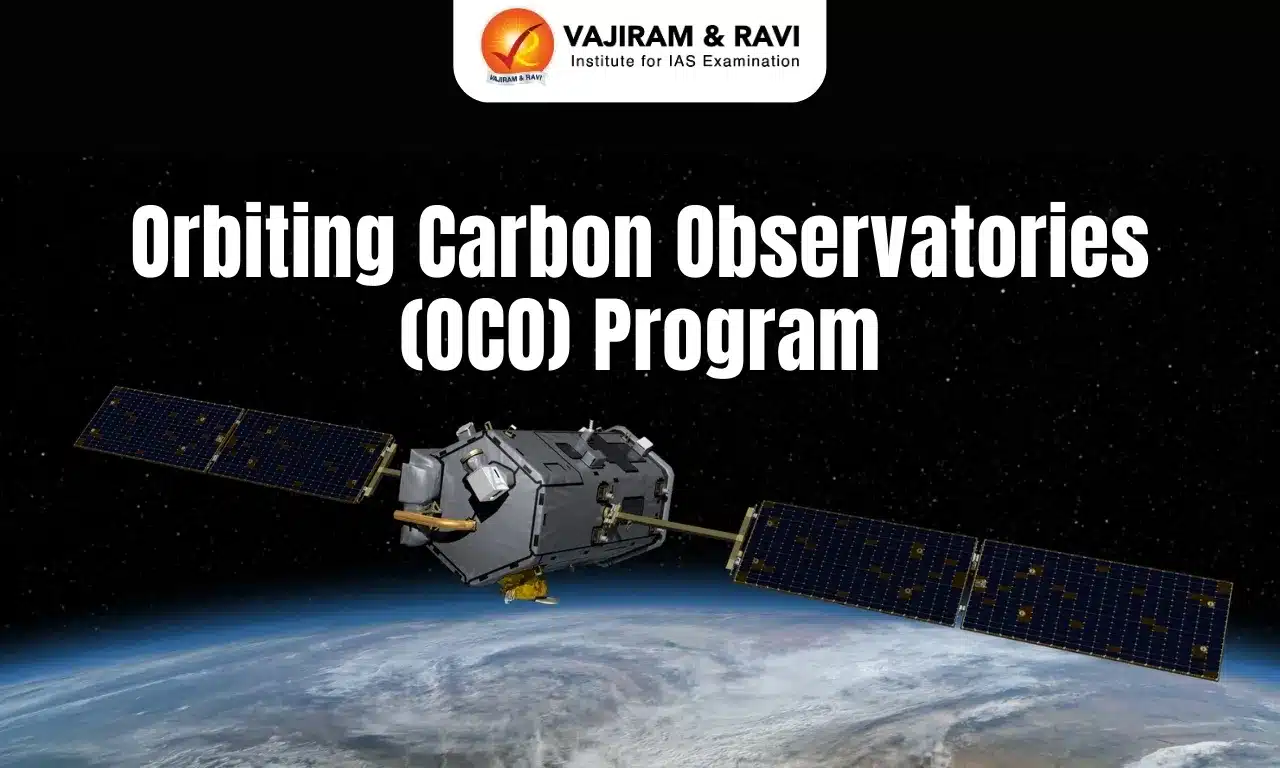Cloud Seeding Latest News
In the wake of disastrous floods in Texas, concerns about cloud seeding technology have run rampant.
About Cloud Seeding
- It is the deliberate introduction into clouds of various substances that act as condensation nuclei or ice nuclei in an attempt to induce precipitation.
- The first experiments with cloud seeding were conducted in 1946 by American chemist and meteorologist Vincent J. Schaefer, and since then seeding has been performed from aircraft, rockets, cannons, and ground generators.
- Many substances have been used, but solid carbon dioxide (dry ice) and silver iodide have been the most effective.
- When used in supercooled clouds (composed of water droplets at temperatures below freezing), they form nuclei around which the water droplets evaporate.
- The resulting water vapour deposits into ice crystals, which build quickly as water droplets attach themselves.
- In clouds at temperatures above freezing, calcium chloride particles provide the condensation nuclei around which raindrops form.
Source: ET
Last updated on August, 2025
→ UPSC Mains Admit Card 2025 will be released soon at www.upsc.gov.in.
→ UPSC Mains 2025 will be conducted on 22nd August 2025.
→ UPSC Notification 2025 was released on 22nd January 2025.
→ UPSC Calendar 2026 is released on 15th May, 2025.
→ UPSC Prelims Question Paper 2025 and Unofficial Prelims Answer Key 2025 are available now.
→ UPSC Prelims Result 2025 is out now for the CSE held on 25 May 2025.
→ The UPSC Vacancy 2025 were released 1129, out of which 979 were for UPSC CSE and remaining 150 are for UPSC IFoS.
→ UPSC Prelims 2026 will be conducted on 24th May, 2026 & UPSC Mains 2026 will be conducted on 21st August 2026.
→ The UPSC Selection Process is of 3 stages-Prelims, Mains and Interview.
→ UPSC Result 2024 is released with latest UPSC Marksheet 2024. Check Now!
→ UPSC Toppers List 2024 is released now. Shakti Dubey is UPSC AIR 1 2024 Topper.
→ Also check Best IAS Coaching in Delhi
Cloud Seeding FAQs
Q1. What is the primary objective of cloud seeding?+
Q2. Which are the substances commonly used in cloud seeding of supercooled clouds?+
Q3. What substance is commonly used as a condensation nucleus in clouds with temperatures above freezing?+
Tags: cloud seeding Prelims Pointers upsc current affairs upsc prelims current affairs















